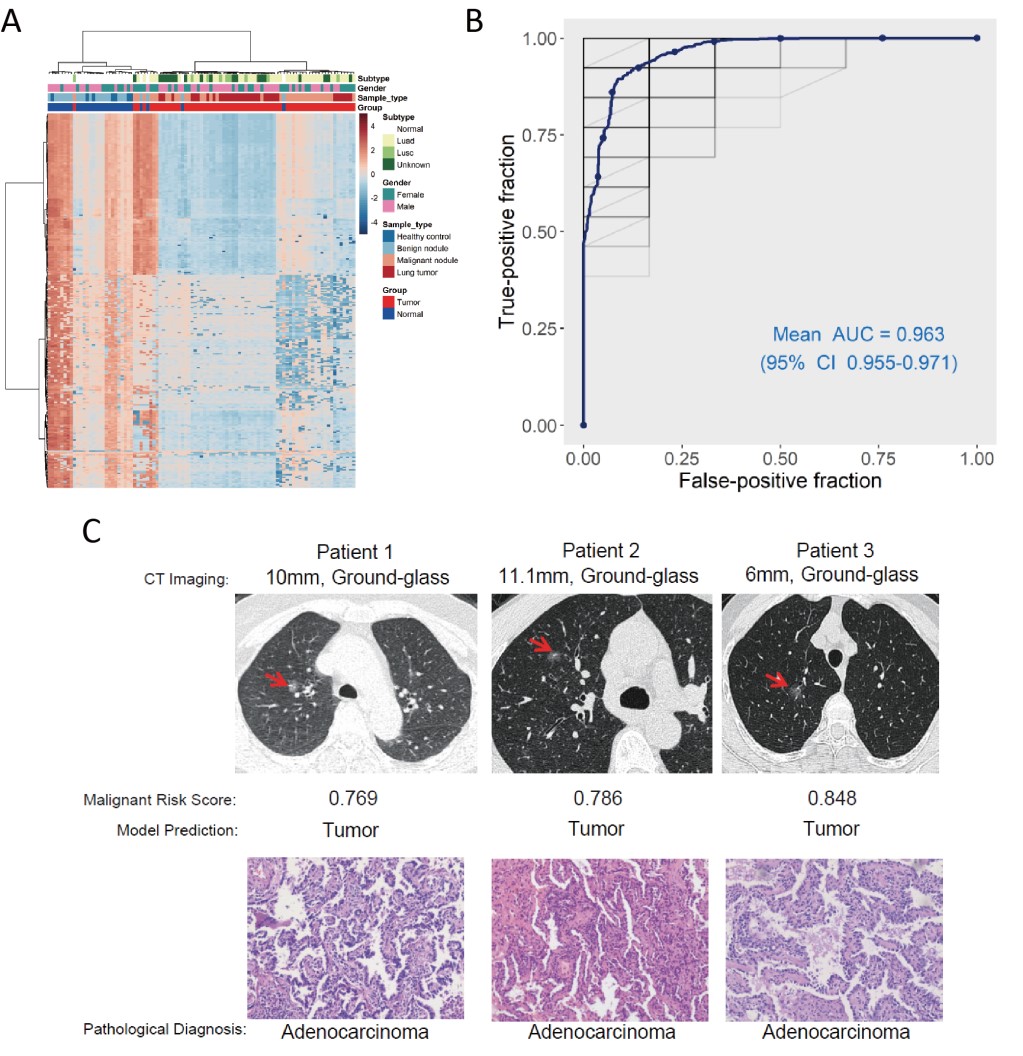
Early detection of lung cancer has significant potential for improving the survival expectancy of patients. Low-dose CT (LDCT) screening has been widely used in the early detection of lung cancer.
However, due to the high sensitivity of LDCT screening, a lot of non-tumorous pulmonary nodules are also detected. Some pulmonary nodules are difficult to distinguish benign and malignant nature by CT imaging. Thus, it's necessary to propose new non-invasive diagnostic options with high sensitivity and specificity to distinguish malignant tumors from benign pulmonary nodules.
Recently, a research group led by NIE Jinfu, from Institute of Health and Medical Technology, Hefei Institutes of Physical Science (HFIPS), in collaboration with researchers from The Second Affiliated Hospital of Anhui Medical University, developed a new non-invasive prediction model to effectively differentiate malignant pulmonary nodules.
The study was published in Cancer Science on July 12.
Using cell-free methylated DNA immunoprecipitation and high-throughput sequencing (cfMeDIP-seq), researchers identified differentially methylated regions (DMRs) of cfDNA between lung tumors and normal controls.
Based on the DMRs, they used machine learning to build a prediction model, which was able to distinguish malignant lung tumors from normal controls with a high sensitivity and specificity of 91.0% and 93.3%.
The study reports the first whole-genome methylation profiling of plasma cfDNA of patients with pulmonary nodules, demonstrating accurate classification of lung cancer and normal control.
"After performing larger prospective validation, this method could transform clinical management by enabling early detection of lung cancer," said NIE.

Figure: (A) cfMeDIP-seq identified the differentially methylated regions (DMRs) of plasma cfDNA between lung tumors and normal controls. (B) AUROC curve for the model to evaluate the predictive ability at distinguishing malignant pulmonary nodules from normal controls. (C) The utility of this prediction model in three independent patients with pulmonary nodules. (Image by WANG Shujie)

86-10-68597521 (day)
86-10-68597289 (night)

52 Sanlihe Rd., Xicheng District,
Beijing, China (100864)

